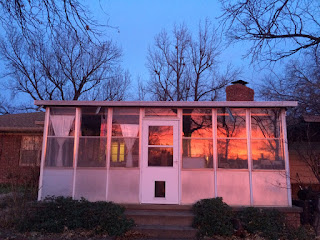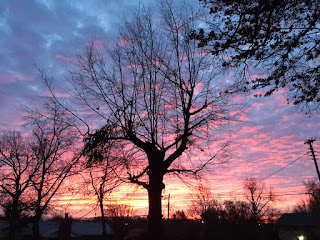As a child I was an amateur naturalist. In my urban New England town I would collect bags full of horse chestnuts and crab apples. I explored the giant woodpile my parents had delivered to our driveway each spring. We would spend the summer piling the logs into neat rows on the front porch preparing for long, cold winters. Each log was a microhabitat for bug life. I would often catch salamanders in my hands and examine all the squiggly bugs hiding under a log at the bottom of the pile. My brothers and I would play king of the mountain and climb to the top of the woodpile or hide buried among the logs on the far side of it.
In my little urban yard I spent a lot of time hiding under the eaves of lilac bushes reading Shel Silverstein poetry. I would write in my journal under a rose bush in the semi-wild strand between our property and our neighbor’s property. The huge Norwegian maple tree in the corner of our yard was a dear friend of mine. I would gather her leaves into piles in the fall and try and kick the piles down while swinging on our play set. I picked raspberries in the far corner of the yard and marveled over the mystery of a hidden quince that flowered each spring and produced little sour fruit I did not know what to do with.
One arbor day I was given a pine sapling and planted it next to the hemlock in our yard. I planted it in the shade of the big hemlock and it soon died. I was discouraged not knowing how to properly plant the tree so it would survive. Another year, in the front yard, my mother had me plant corn seeds and before long our corn stalks reached their arms to the heavens with yummy large cobs to eat all summer. I became a corn maiden.
As a grown up and mother in my Mid South little city I use the nature in my back yard as a contemplative space for myself. I do a "Sit Spot" in a corner of the yard twice a week. For 20 minutes I sit in that spot and watch as the life of my back yard animates before me. I have never felt bored doing this. There is so much to see, listen to, and understand. I now long for my sit spot session. It is my quiet time to take in all that surrounds me. Getting to know one place, one habitat, has taught me to fall in love with where I live. It helps me to be more focused when I come back to my home afterward and step back into the role of parent. It also helps me to remember how important it is to spend time outside with my kids.
Children approach nature differently from adults. In my adult lens I want to preserve nature, to examine it without the influence of my touch. A child wants to get up in nature, feel it, pick it, prod and poke it. If we don't give them a chance to do this, they lose interest. Although I know about these differences, they can be hard to stomach. I hate it when Sweetpea picks flowers from our front yard bush. I find them piled on the console table, presents for me that are forgotten soon after the picking. I realize that in her picking she is getting to know the plant, she is touching and ripping, smelling and feeling all the essence the plant has to offer. If she just looked at the plant with her eyes she would soon tire of it. Unless I sat with her and encouraged her to look deeper, she would forget the plant. The act of taking from the plant helps her to build a relationship with it. She also helps me trim this bush in the spring. When new shoots threaten to take over the front porch. We get to hack them down together. We have a delightful scented pile of brush to play with for the next few weeks. These branches could become fairy crowns, birds’ nests, or the woven mat of a roof for an earthen shelter.
The possibilities are endless for a pile of sticks covered in leaf and blossom.
I have learned as an adult there is a whole category of intelligence called nature intelligence. When I have called myself a plant person I did not realize I really had the brain for it. I soak up nature knowledge and it comes easily to me. I hear a plant name and know it by heart almost immediately. I never saw this part of myself as a career path, I always saw this talent as just a part of me. Being a plant person was a piece of who I was, but not a calling. As the world shifts and changes, our climate becomes more unpredictable. Food is becoming more expensive and insecure and disconnect from the place a person lives is more prevalent. I am starting to see how much plant knowledge and earth connection is needed. My interest in birds, plants and the day-to-day wildlife is something a lot of people don't have and need help finding.
I am now seeing it as my mission to teach the skills of sustainability. I am bringing nature knowledge to young people. I am teaching adults to remember what having a sensual connection with nature is by learning about the environment that is right in front of them. I believe when people know the nature that surrounds them they care more and are more likely to make choices that keep the earth in mind. People feel Connected to the beautiful and intricate web of life starting in their backyards.
Nature Knowledge all starts in our daily environment. This knowledge is potent, it is believing we have influence and are connected to all living things. If we realize this, we give power to the earth and we give voice to the policies we want to see in place. We must appreciate the importance of being present with the beauty of our own little worlds and make sure it survives for generations to come.



